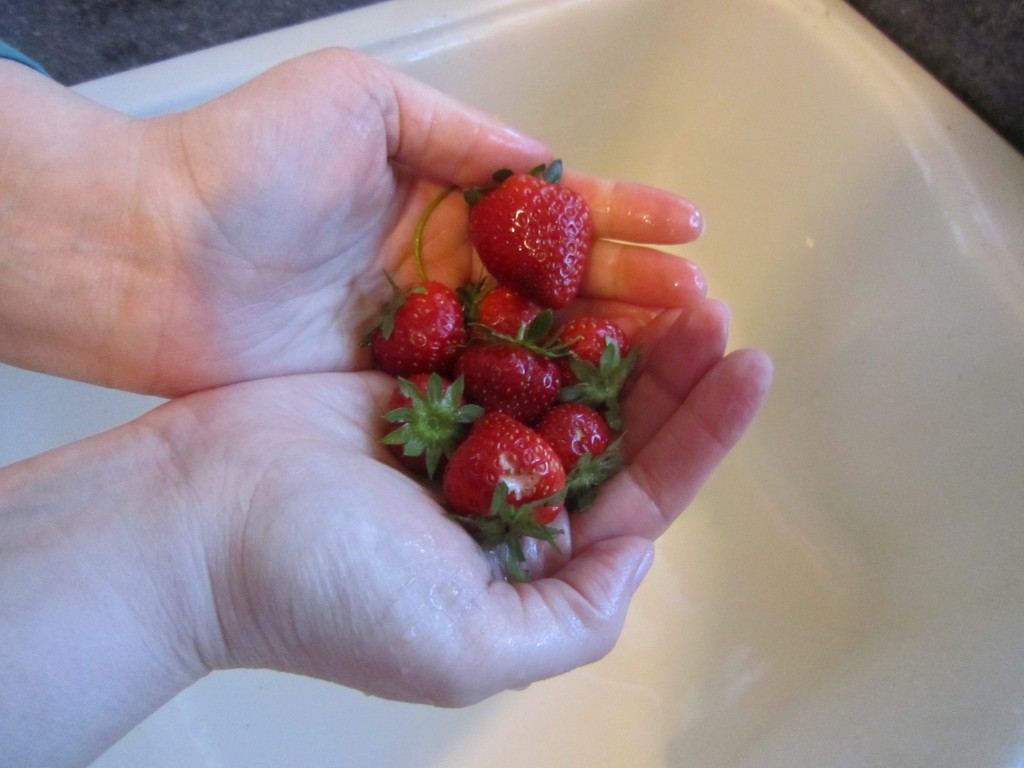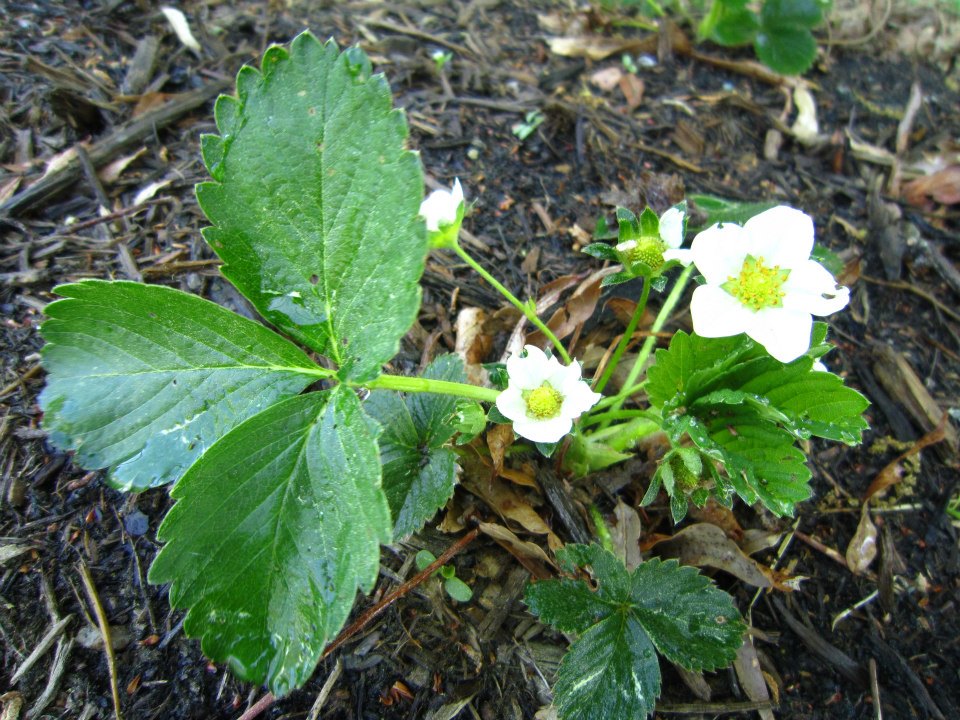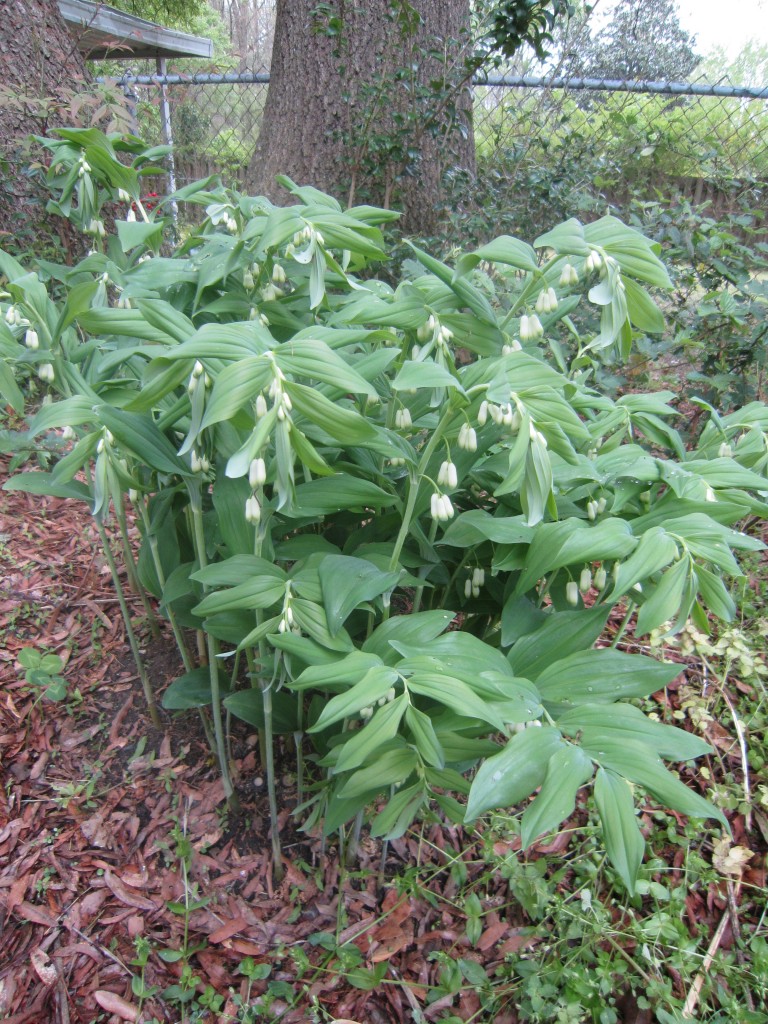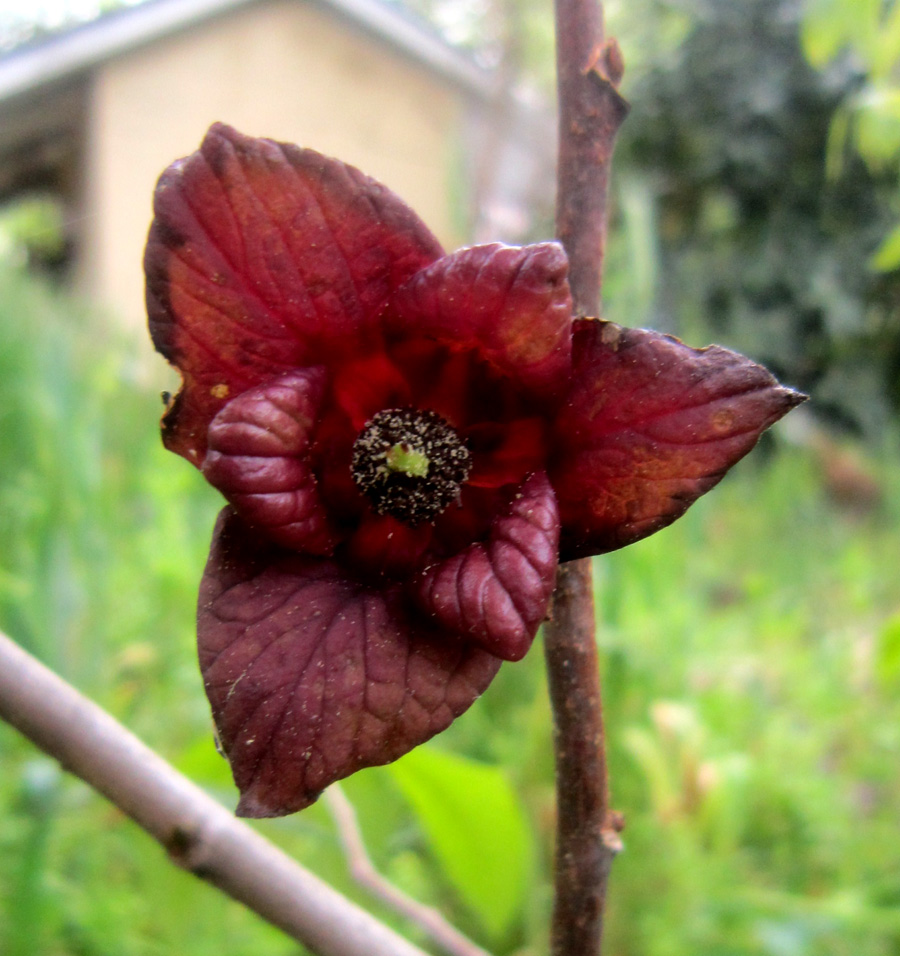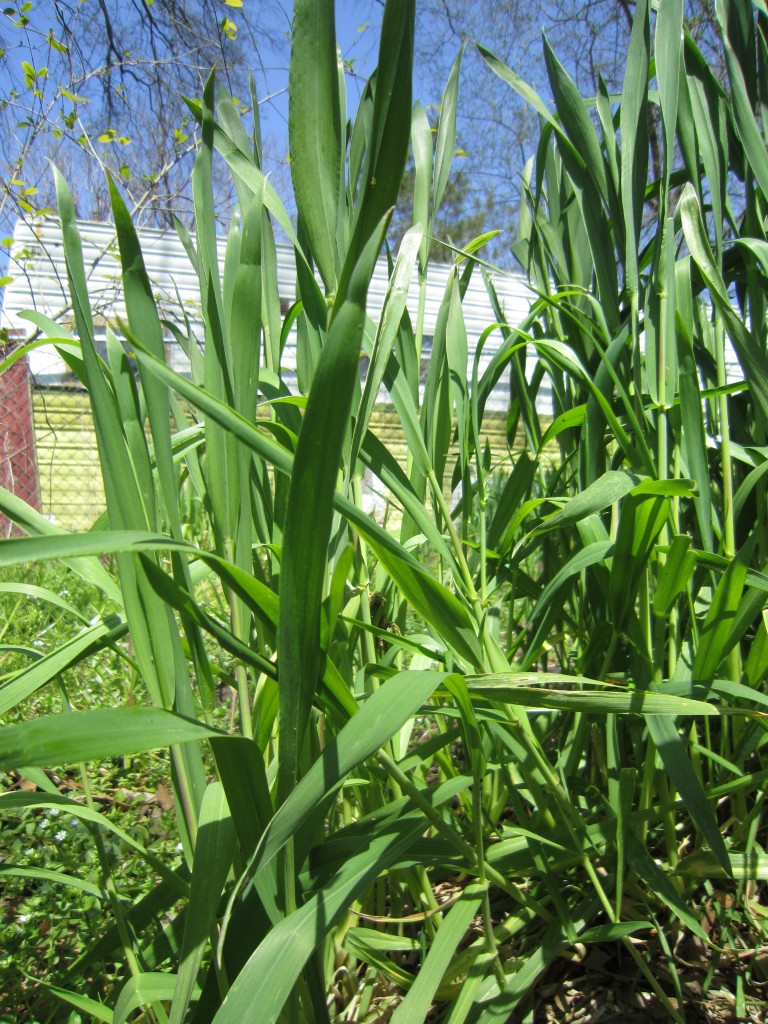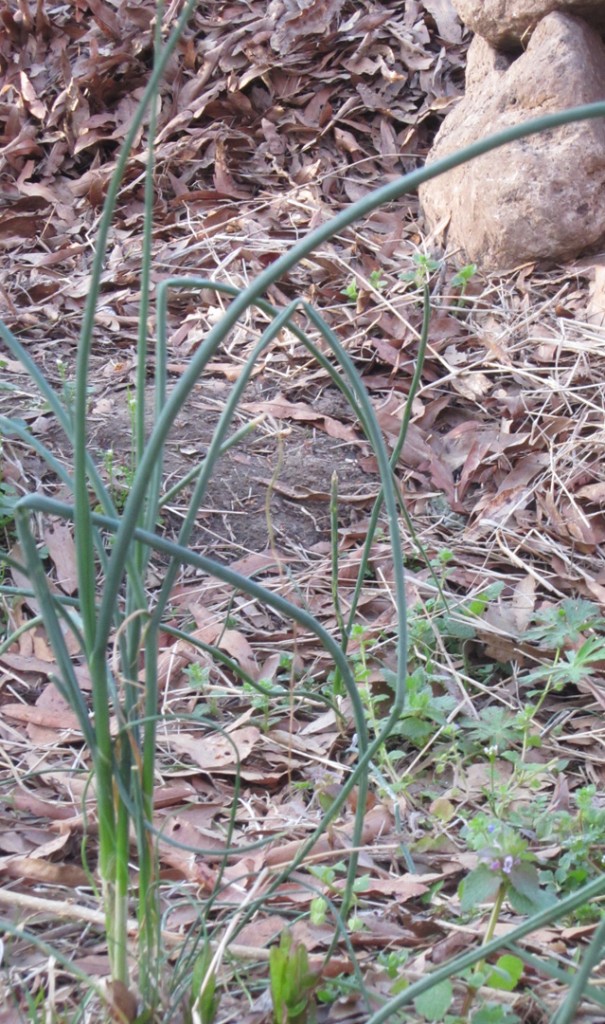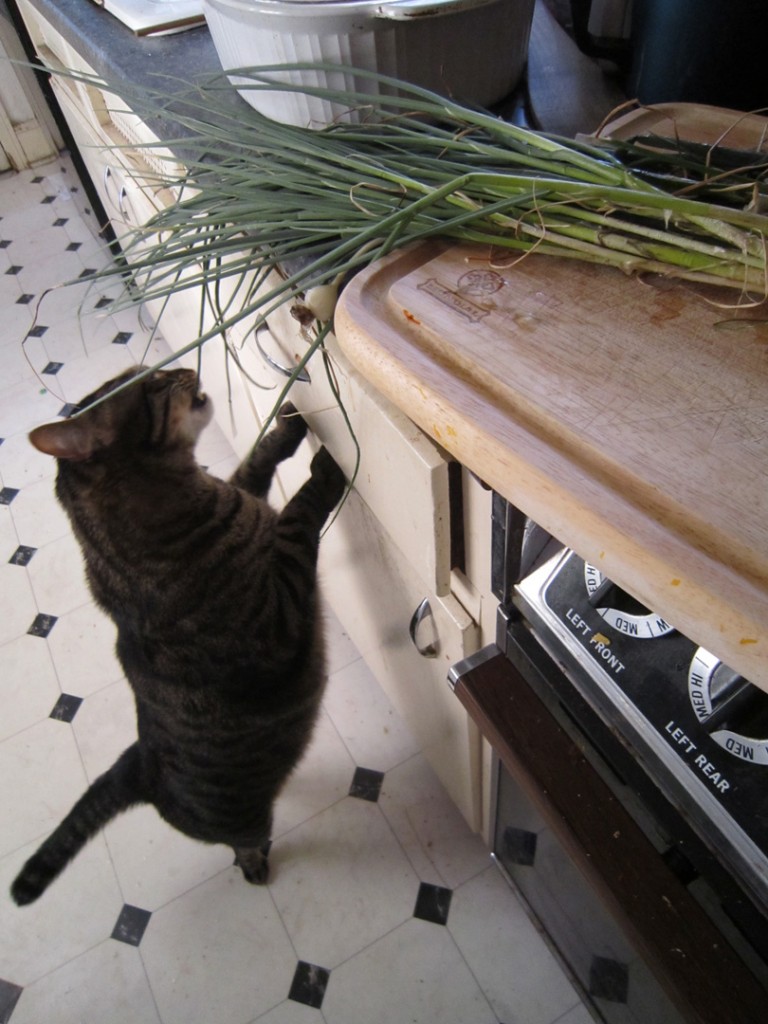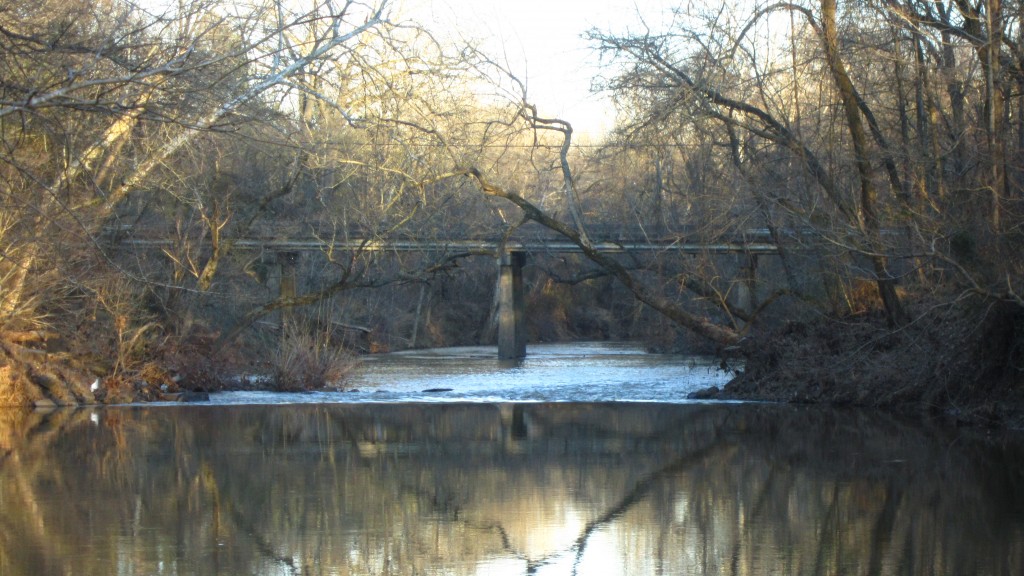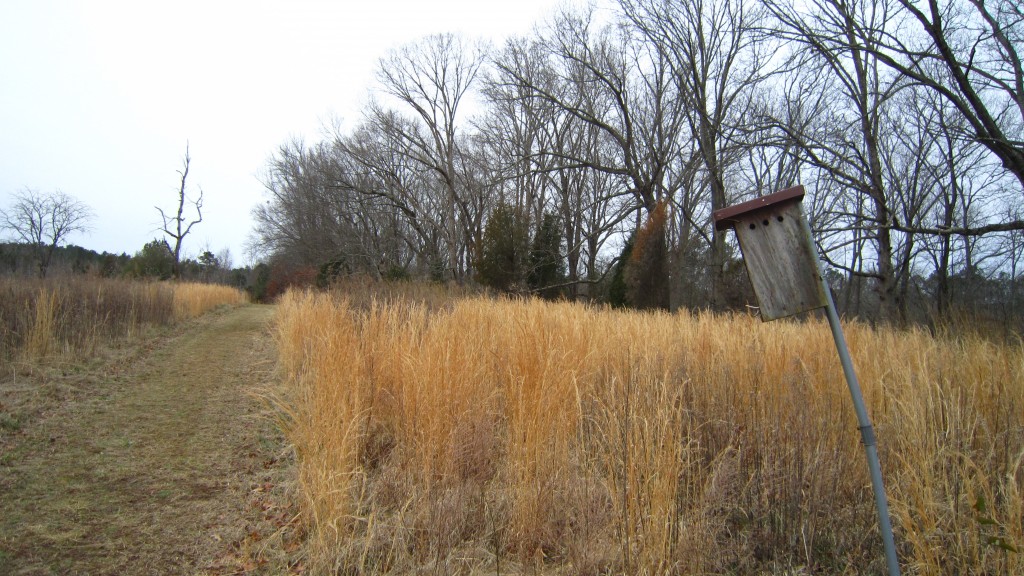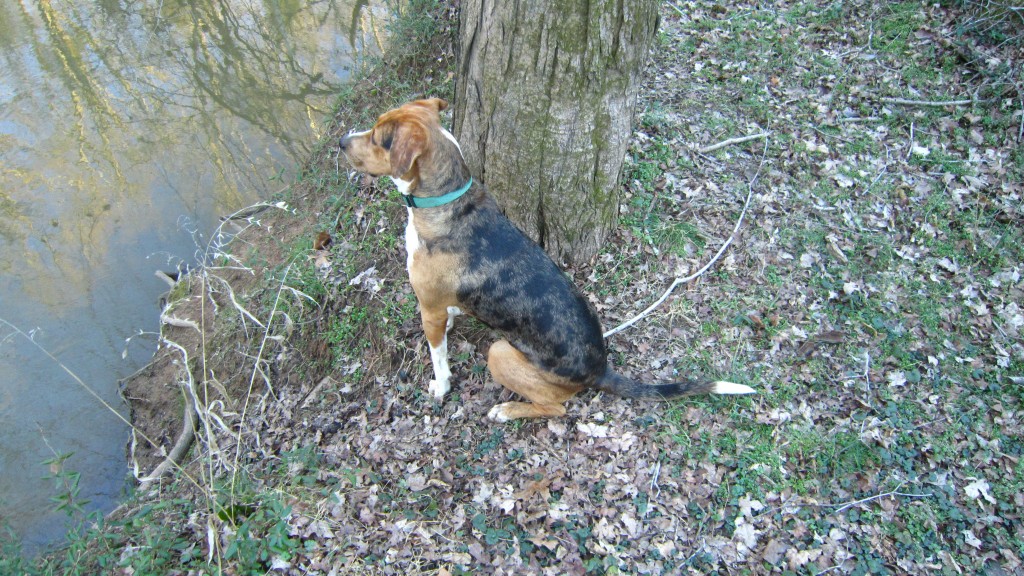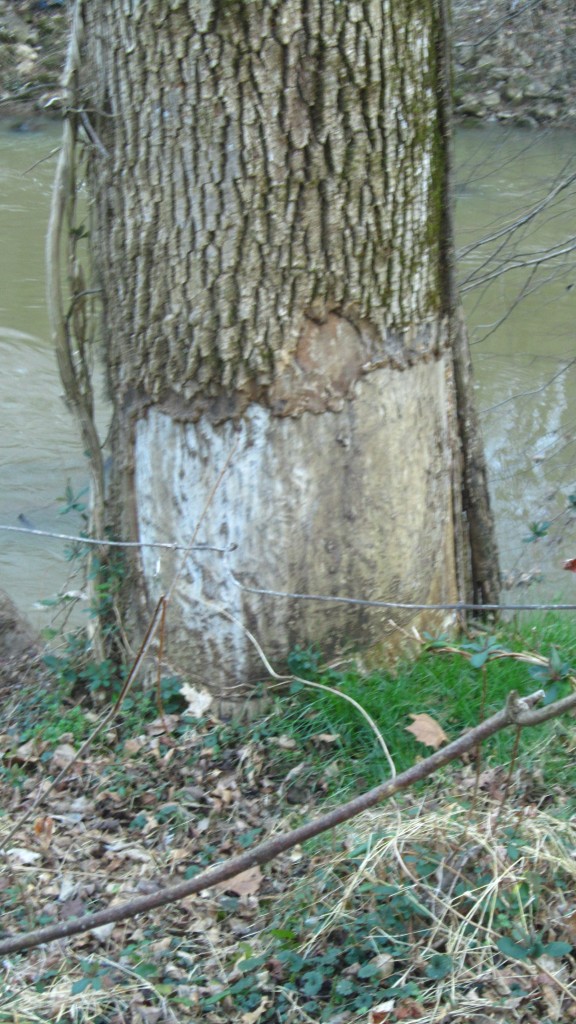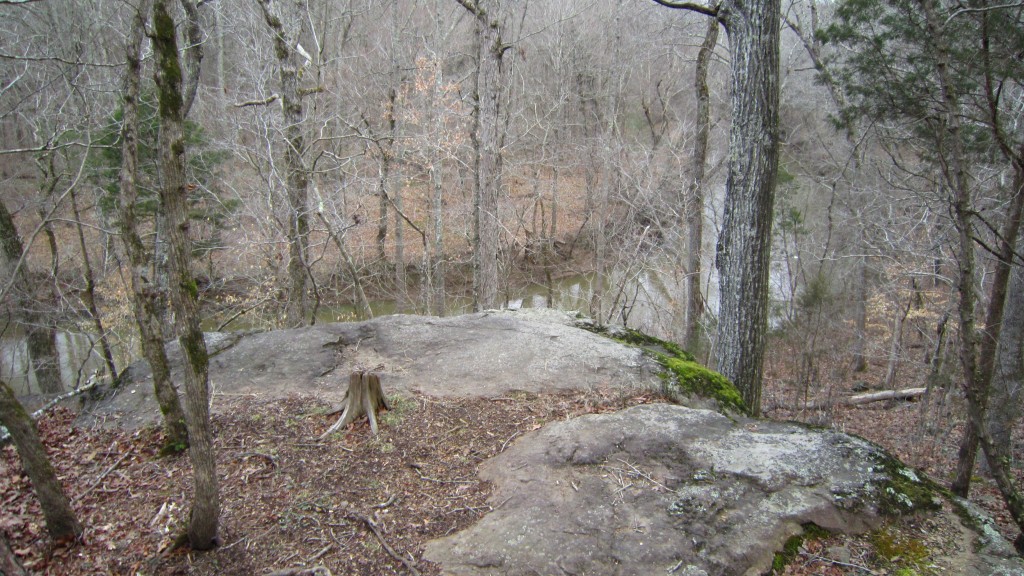Home » Articles posted by Matt Mielke (Page 2)
Author Archives: Matt Mielke
Strawberry fields forever
Yesterday Shawnna harvested our first strawberries of the year. She waited until I got back from my trip to do this. I don’t think I would have had that kind of self control!
I got the plants last year from our neighbors Dan and Darcey, who had more strawberries than they knew what to do with. They told us that the strawberries were in such abundance that they could smell them when they got out of their car. The strawberries were so plentiful that some were rotting on the vine. They warned me that the plants would spread rapidly and would need to be thinned out. I told them we would love to have that problem!
Now our front yard is full of them, and there is the added bonus of not having to mow that part of the lawn. Life is good!
Solomon’s Seal
I think it’s time for a new series called Nostalgic Plants of Childhood, starting with Solomon’s Seal. As a youngster growing up in Boone, I’d always see this plant when I was hiking in the woods. I loved its gently curving leaves and tiny clusters of white, tubular-shaped flowers. Thinking it was a mountain plant, I was surprised and delighted when some shoots sprouted up in our Durham backyard a few years ago. Since then it’s returned every spring in all its beautiful glory.
A relative of the lily, Solomon’s seal is the name for almost 50 species in the genus Polygonatum. The kind I’m referring to is commonly known as “True Solomon’s Seal” (Polygonatum biflorum) not to be confused with False Solomon’s Seal.
The young shoots are edible and taste like asparagus when boiled. Unfortunately, the rhizomes only seem to grow about an inch or two a year, which means at this point it’s not really practical for us to harvest it. Too bad we don’t have it covering the backyard, like the huge patch we saw on Mt. Jefferson in Ashe County last summer. I’m definitely going to let it keep growing. It seems that our woody, shaded backyard is an ideal environment for it.
Looking online, I was also surpised that there seems to be a whole cottage industry associated with this plant. There is even a website, http://www.solomonsseal.net, that sells Solomon’s Seal for medicinal purposes. For hundreds of years people have used the root to make herbal teas and liniments. The alleged benefits of the root are numerous:
- Heals bruises, wounds and rashes
- Reduces inflammations in joints and tendons
- Reduces blood pressure
- Loosens mucous in lungs
- Prevents premature ejaculation
- Relieves premenstrual syndrome
- Hastens recovery from bone injuries
According to one source, the plant gets its name from King Solomon, who proclaimed that the plant was a gift from God.
It’s just a plant that is too beautiful for us to harvest.
Canoeing by moonlight
Friday night we took a nighttime canoe ride with our friends Cathy and Rob. We were part of a larger group sponsored by Frog Hollow Outdoors, who provided the boats and led us on the tour.
 We canoed in the Three Rivers area of Durham, which is where three rivers—the Eno, Flat and Neuse—converge and empty into Falls Lake. Putting in at the Eno River boat ramp off of Red Mill Road, our flotilla headed east, to the end of the Eno River.
We canoed in the Three Rivers area of Durham, which is where three rivers—the Eno, Flat and Neuse—converge and empty into Falls Lake. Putting in at the Eno River boat ramp off of Red Mill Road, our flotilla headed east, to the end of the Eno River.
Our guides asked us to turn off our lights so that we could utilize our nighttime vision. The full moon provided enough light for our paddle, and the weather was perfect. Occasionally a heron would fly overhead, and the owls definitely made their presence known.
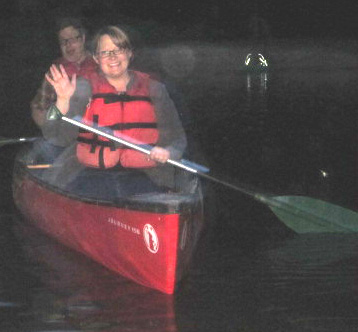 Soon we reached the end of the Eno and came to the headwaters of the Neuse. The Flat river stretched out to the north of us.
Soon we reached the end of the Eno and came to the headwaters of the Neuse. The Flat river stretched out to the north of us.
We sat there and listened to the unusual sounds of the cricket frogs. They made a surreal static popping noise, almost like a Geiger counter. One of our companions was startled by the slapping of a beaver tail.
Although we had a blissful paddle through the moonlight, we were glad when we got back to the boat ramp. That night we slept well, dreaming of herons and cricket frogs.
Way down yonder in the paw paw patch…
It made my morning to discover that our paw paw tree had flowered. The flowers are an astonishingly-pretty deep red with a hint of purple. We planted this tree a few years ago, but this is the first time it’s flowered, which means it should fruit sometime over the late summer.
I’ll be honest with you: I’ve never eaten a paw paw before, but I’m told they taste like mangos. They live in shady areas along streams and river basins in much of the Eastern U.S. When we planted this tree, we thought the back of the yard was wet and shady enough, and would be a nice addition to our edible landscape. When I create my first paw paw smoothie, I will be sure to write a post about it.
Does anyone remember this song from their elementary school days?
Pickin’ up paw paws,
Put ‘em in your pocket
Pickin’ up paw paws,
Put ‘em in your pocket
Pickin’ up paw paws,
Put ‘em in your pocket
Way down yonder in the paw paw patch
Bamboo
UPDATE: Dear readers, it turns out that the “bamboo” in my back yard is actually wheat. Shows you what I know. (5/10/13)
Recently some bamboo sprouted up in our yard.
The sight of it made me a little anxious, probably because I’ve heard enough bamboo horror stories over the years to compile an anthology. These are tales that pit neighbor against neighbor; someone’s well-intentioned bamboo screen screen gets out of control and crosses the property line where it becomes a problem for someone else.
There are two kinds of bamboo: running and clumping. The running variety is such a problem because its rhizomes grow laterally, through the soil surface, which make it spread very fast. I’ve heard that if you’re going to plant bamboo, definitely plant the clumping kind. Check out the difference:
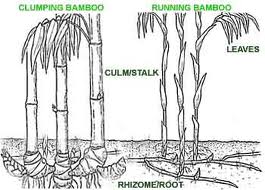
You can control the running kind by creating something called a rhizome barrier. The idea is to dig a trench around the bamboo that is at least two-feet wide, and just two inches shallower than the width. Because the rhizomes will eventually pierce through concrete and steel, a HDPE (High Density Polyethylene) barrier must be placed in the trench. When placing the barrier in the trench, it is essential to angle it in such a way that the rhizomes will move upward as they start to spread. That way, any rhizomes peeking over the barrier can be clipped.
I dug around my neighbor’s fence line and discovered that the bamboo was coming up under the fence from their yard. I’ve been digging a trench along the fence line, and I’m going to get some Polyethylene soon. As far as the rest of the bamboo that has sprouted just a few feet away from the fence line, I think I’m going to create a barrier around it as well so that I will be able to manage it. I realize some of you will think I have just lost my mind. If I create an epidemic, I will take full responsibility for it, and you’ll be reading about it in another post.
I’m willing to take that risk because I truly want our lot to be a closed system, where everything is produced onsite and nothing is thrown away. With that paradigm in mind, why shouldn’t we harvest our own bamboo? We use it extensively for building trellises and staking out plants in the garden. I’ve even constructed a privacy fence out of it before. And besides, Toby Hemeneway gushes over bamboo in Gaia’s Garden, This could be the best thing, or the worst thing we’ve done in the backyard this month. To be continued…
Bat houses
I just purchased a bat house for $2.00 at a neighborhood garage sale. What a bargain!
Why a bat house? For one thing, bats are a natural form of pest control: a single bat can eat up to 1,000 mosquitoes in an hour. I’ve seen them flying around our pond at dusk, so I know they are already here.
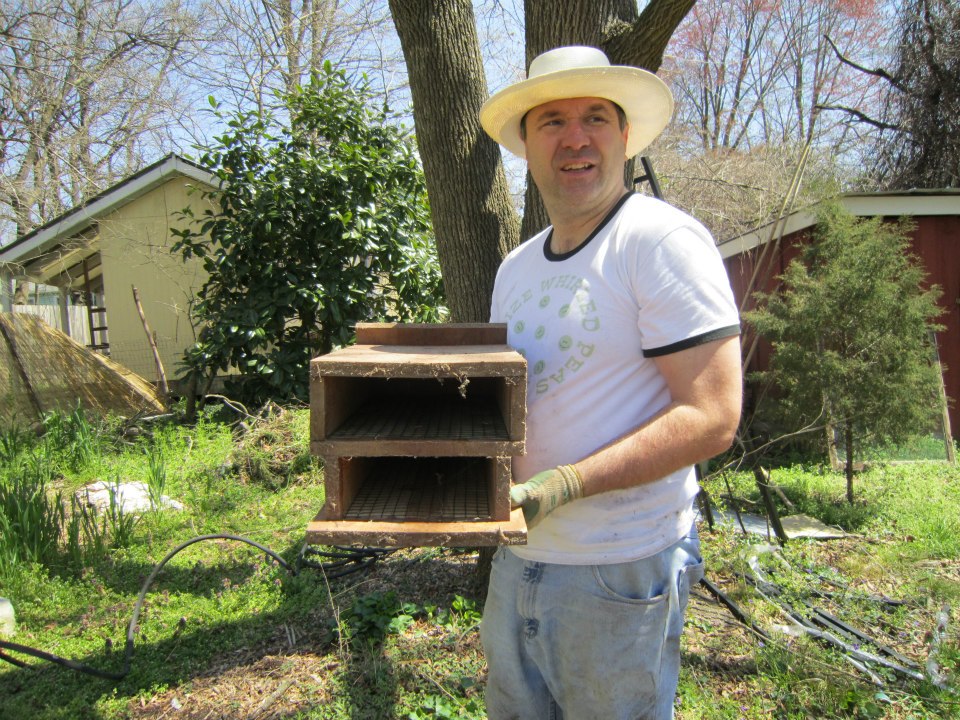 Did you know that over 5 million bats have died from a fungal disease called white-nose syndrome? This disease has decimated bat colonies everywhere, which makes creating a bat habitat that much more important.
Did you know that over 5 million bats have died from a fungal disease called white-nose syndrome? This disease has decimated bat colonies everywhere, which makes creating a bat habitat that much more important.
I’ll be the first to admit that bats freak me out a little bit, and I usually don’t have a problem with wild animals. We had to remove one a couple of years ago that came down our chimney, and I still remember those sharp little teeth, those wings that were really flaps of skin, and its dark onyx color. Creepy.
Bats are rabies carriers of course, but it turns out that a very low percentage of bats carry rabies. They also don’t live very long after they become infected. I’ve never heard of someone contracting it from a bat. In fact, there is a bridge in Austin, Texas that is home to almost a million bats; it is the largest urban bat colony in the U.S. and there has not been a single bat-biting incident.
Now I have to think about how I’m going to hang the bat house. I’ve been looking at some bat-house best practices which happen to be confirmed with statistical data. It turns out that a higher percentage of bats prefer their homes mounted on the sides of buildings or poles rather than a tree. They love being near water and in an area that gets adequate sunlight to warm up their homes. The bat house also needs to be around 20 feet high. I think I’m going to find some very large pieces of bamboo and mount the house on that. Currently I’m trying to find something long and thick enough. Pictures to come soon!
Duke Gardens named one of nation’s top 10
Duke Gardens have been named one of the top 10 public gardens in the United States. Check out the article on tripadvisor.com. I feel lucky to work right next door.
If you can’t get out to the gardens today, visit them virtually using their interactive map.
Foraging for onions
Nothing could be finer than foraging for food in your backyard on a glorious North Carolina spring morning. Today’s harvest was wild onions, and there were onions ‘o plenty.
Wild onions are part of the allium genus of plants which includes all types of onions, garlics, chives, and leeks. (Allium is the Latin word for garlic, by the way.) This morning’s mantra was “all alliums are edible,” which happens to be true.
I dug a whole bunch out of the ground, washed them and put them on the chopping block. They looked a lot like scallions to me and definitely had a similar taste. I chopped them up and threw them in the crockpot to give my beef stew some more flavor.
Franklin decided to get a little taste for himself.
I’d be curious to know if anyone out there knows where to find “ramps” which are a variety of wild onion that have become increasingly popular on the restaurant scene. Their stems are flatter and wider then the more conventional kind you see around here, and have a distinct garlic taste. They are also native to the Appalachians. Next time I go up to Boone I think I’ll try to find some.
By the way, Chicago got its name from Checagou, which is the Potawatomi name for wild leeks. Apparently the surrounding marshlands were saturated with rotting, wild leeks. True story.
Bon Appétit!
Outlawing sustainability
The states of Kansas and North Carolina have a lot more in common than a shared basketball legacy. They also have legislatures that are embarrassing the good people of both states. While the exploits of our own Tarheel Taliban have been making national headlines lately, the Kansas State Legislature has too. It’s hard to believe, but they have actually proposed a bill outlawing sustainability.
The bill, HB 2366, would outlaw the use of public funds for sustainability efforts. It defines sustainability as “a mode of human development in which resource use aims to meet human needs while preserving the environment so that these needs can be met not only in the present, but also for generations to come, but not to include the idea, principle or practice of conservation or conservationism.”
A recent article pointed out that this very definition of sustainability was lifted verbatim from the Brundtland Report, published by the United Nations World Commission on Environment and Development in 1987. ( I had no idea this document even existed, or that today the U.N. has it’s own Commission for Sustainable Development.)
The sponsor of the bill, Kansas Rep. Dennis Hedke (R-Wichita) last year supported a resolution condemning the U.N.’s Agenda 21 sustainability plan.
Hedke, a geophysicist and oil contractor, is chair of the State Committee on Energy and Environment. Koch Industries, which happens to be the second-largest privately-held company in the U.S., is listed as one of the top contributors to his campaign.
The blue herons of Duke Gardens
Now that the weather is warming up, I’m looking forward to seeing the blue herons who hang out in Duke Gardens. I’m assuming there are more than one of them although I’ve never seen a pair. They are fearless and let you get really close if you want to take a picture. Here’s one I snapped a couple of years ago in the Asiatic Arboretum at Duke Gardens.

These creatures have always fascinated me. A couple of years ago during one of our awful summer droughts, I saw one walking upright on its spindly legs through an almost-dry Ellerbe Creek. The heron reminded me of a dinosaur or a freaky creature from another planet.
I wanted to find out more about these birds, so I contacted my friend and ornithologist-extraordinaire Becky Browning. Becky was the bird collections manager at the NC Museum of Natural Sciences and is now living with her husband in Amsterdam. She works as a bird conservator at Naturalis Biodiversity Center there.
Becky told me that the herons nest colonially in trees, and are partially nocturnal. (No wonder I don’t see them eating the goldfish out of my pond, I thought.) Apparently they are increasing all across North Carolina, breeding in places they haven’t before, and moving to higher elevations in the Appalachians. In fact, they’ve been spotted in Watauga County at Bass Lake, over by the Cone Manor, one of our favorite places. They were one of those birds, like the osprey and the eagle, who suffered from DDT in the 60s and 70s but have since made a comeback.
They eat anything: mostly fish, of course, but also crawdads, large insects, frogs, small snakes, and if an unlucky mouse is nearby, mammals too. You hear folks with garden ponds complain about the herons who swoop in and eat their koi. That’s why I stock my pond with 10-cent goldfish!
I’m sure we’ll be seeing them again in Duke Gardens in the coming weeks. For more on herons, check out The Cornell Lab of Ornithology’s heron page.
Another great reason to live in Durham
Urban farming gets an official OK from City Government:
http://www.thedurhamnews.com/2013/03/23/215030/urban-farming-gets-official-ok.html
The elusive beavers of Penny’s Bend
I’ve been reading the excellent field guide, Exploring the Geology of the Carolinas, written by Kevin Stewart and Mary Russell-Robinson. It is a great introduction to geology for those of us who’ve never taken a geology course before. One of the other neat things about the book is that each chapter serves as a guide to a geologically-interesting place in the Carolinas, complete with maps and directions. A couple of weeks ago, I decided to visit one of these places, Penny’s Bend, which is only 5 miles down the road from our house. A word of caution: there are a lot of ticks at Penny’s Bend, so you’ll want to wear long pants and a cap if you venture out there.
Penny’s Bend has lots of exposed rocks from when the continents of what are now Africa and North America pulled apart. The volcanic rock also makes the soil at Penny’s bend alkaline. As a result, you find a lot of plant species there are similar to what you find on the prairies of the midwest. Most things aren’t in bloom right now, but some of the flower species at Penny’s Bend include: asiatic dayflower; blue wild indigo; smooth purple coneflower, hoary puccoon, and Dutchman’s breeches.
As I was hiking, close to sunset, a friendly dog started following me. I noticed he would occasionally run ahead of me to the edge of the river and bark.
After a few minutes I realized that he was barking at the beavers who live in the area. On the bank at river’s edge, I saw a mass of sticks and mud which appeared to be a beaver lodge. The gnawed-off trees around me appeared to confirm this.
I don’t know why I did this, but I yelled “go get em boy” at which point he ran down to the the lodge. A few seconds later, I saw something swimming in the river. It was way too big to be a fish. Unfortunately it was getting dark and I had to get back home.
I decided to go back early in the morning to see if I could get a glimpse of the beavers. I didn’t have any luck, but I managed to get more pictures of the beautiful rock formations, and hiked up to a nice bluff overlooking the Eno. You don’t get a lot of nice vantage points like this in the Triangle.
As for the beavers, maybe I’ll see them at one of their other Durham locations. For those of you who don’t know, one of the largest beaver ponds in eastern North Carolina is Behind the Big Lots off of North Roxborro street. It’s been turned into a preserve thanks to our friends at the Ellerbe Creek Watershed Association and the group of neighborhood activists known as the “Beaver Lodge” of Durham. They’ll be having their annual Beaver Queen Pageant on June 1st, which helps raise money for the Ellerbe Creek Watershed Association.
How permaculture saved my basement
Three years ago today, some friends invited me to hear permaculture enthusiast Toby Hemmenway speak at the Nicholas School of the Environment here at Duke. As I walked to the lecture, a gentle snow blanketed the ground. Little did I know what a positive impact this lecture would have on my life.
Permaculture, it turns out, is a garden design methodology that is modeled after natural ecosystems. It is a beautiful and simple paradigm, and requires from the gardener a little common sense, some strategic planning and a bit of upfront work. The gardener is then able to leverage the resources that nature provides for free. The end result for the gardener is a huge payoff in terms of yield versus mount of overall work in the garden. Or as Hemmenway writes in his book, Gaia’s Garden, “The idea is that you buy nature drinks, and she picks up dinner for you.”
In his talk, Hemmenway traced the development of humans from primitive foragers to modern farmers. He spoke about the rise of horticultural societies, cultures that had advanced beyond simple foraging but did not practice what we think of as modern farming. They were (and are) something in-between. Examples of these societies are numerous, such as the Hopewell culture in the U.S. or the Nuaulu in Indonesia. To outside observers visiting these communities for the first time, Hemmenway said, their landscapes often appeared wild and untamed; a closer look, however, would reveal things like sophisticated plant guilds and food forests growing everywhere.
I guess you could call these horticultural societies the first permaculture practitioners. Hemmenway spoke about how people in these groups only had to work a few hours a day on food production, which gave them more time for leisure activities. In contrast, the typical modern farmer would have to work 2-3 days to produce the same amount of food.
From that point on in the lecture, I was completely captivated. I realized that through strategic planning and common sense I could actually work less in the garden and get better results at the same time! All I had to do was adapt to the new paradigm. If there was a gardening Bible, Gaia’s Garden became my New Testament, a radical break with my gardening past.
That spring my wife and I focused on utilizing all of the natural resources available to us in our yard, a sloped urban lot about a quarter acre in size. We started with water collection. I was amazed at how quickly the 80-gallon barrel we already had filled up, so I bought some 275-gallon barrels and put them under the other available downspouts. With some help from my wonderful friends, we built a ten-by-twelve foot goldfish pond on the sloped backside of the yard. We have about 2,000 gallons of water at our disposal at any given time. We have never run out of water, even in the worst droughts of summer.
We also knew that we could take advantage of our sloped yard by catching water as it came down the hill. We did this by slowly sculpting the yard, digging small trenches and building up mounds of dirt, leaves and compost to catch water runoff. (Hemmenway describes these water-catching techniques in his book.) The overflow area in front of our pond became a bog where we’ve planted things like insect-eating pitcher plants and scouring rush, which attracts insect-eating dragonflies.
With so much water available to us, we began thinking about turning our yard into a giant edible landscape. We started with blueberries, and have since added strawberries and elderberries, as well as fig, plum and paw-paw trees. We also plant vegetables, of course. This year we’ve created a new vegetable bed that will be fed by water runoff.
Adhering to the principles Hemmenway outlines in his book, I also became obsessed with making our yard a “closed system” where nothing would ever be thrown away. I can’t think of a better example than the piles and piles of leaves that accumulate under our giant oak tree each fall. In the old days, we would grudgingly rake up the leaves, put them in bags and let the yard waste people pick them up. Now we use all of the leaves in the yard, creating small “hills” that are part of the contoured landscape. Eventually they turn into compost, along with the scraps from our kitchen, which we can use for gardening.
Three years later, it keeps paying off. With all of the landscaping we’ve done, I don’t have to mow the yard anymore. In fact, I gave our lawnmower away. Strawberry plants have replaced much of the grass in the front yard. Our basement used to flood regularly because of all the water runoff; we haven’t seen a drop of water in the basement in ages. We’ve reduced the amount of time we have to spend watering the plants because nature is helping us out. We’re attracting more wildlife to our backyard, including frogs, interesting birds, dragonflies and butterflies. Most of all, we’re having fun and enjoying our yard more. Thanks to my friends and the Nicholas School for turning me into a permaculture enthusiast! Don’t take my word for it, see Hemmenway’s lecture from February 2010, and get his book, Gaia’s Garden.
